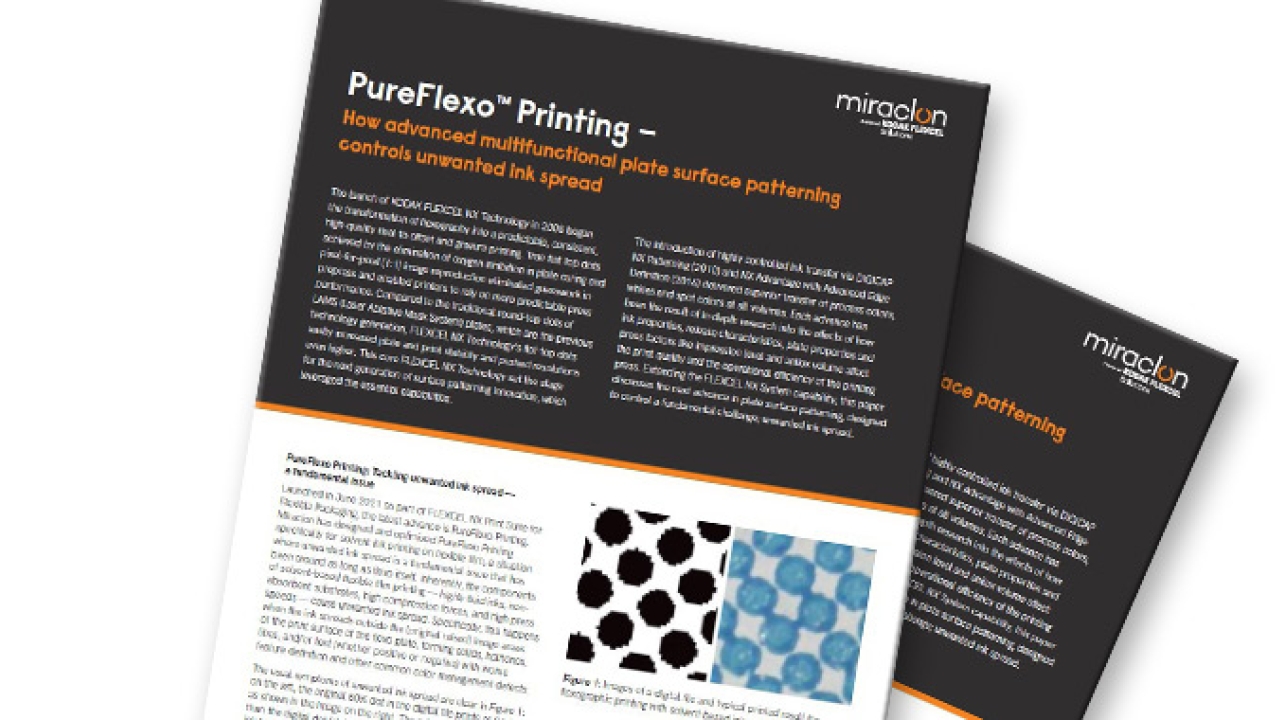Miraclon issues unwanted ink spread white paper
Miraclon has published a white paper that looks at how the company’s PureFlexo technology overcomes unwanted ink spread, one of the fundamental challenges for solvent-based flexible film printing.

Unwanted ink spread occurs when ink spreads outside the (original raised) image areas of the print surface of the flexo plate, forming solids, halftones, lines, and/or text (whether positive or negative) with worse feature definition and other common color management defects. Ironically, it has become more widespread as brands adopt flexo as a high-quality printing process capable of the most challenging work, with packaging designs commonly produced at 120-150 line screens.
According to Miraclon, until now, brands, printers and converters have lived with it as a stubborn by-product of the highly fluid inks, non-absorbent substrates, high compression forces, and high press speeds used in the process.
The ‘dirty print’ it causes means presses have to run slower, unscheduled stoppages to clean plates are more frequent — an average of six per press per day, according to Miraclon research, and press setup latitude is reduced.
The newly published white paper illustrates the symptoms and how the corrective workarounds press operators commonly take - adjusting impression forces, using harder tapes, and lower-viscosity inks - only exchange the initial problem for others, such as ink starvation, pinholes, voids and loss of density.
It then analyses how PureFlexo Printing, the latest Miraclon’s plate surface patterning technology, leverages advanced structures just a few microns in size to distribute the impression load, hold ink, and deliver it more precisely to the substrate surface.
‘Years of research and expertise in understanding ink transfer mechanisms have gone into the development of PureFlexo Printing,’ said the paper's author, Dr John Anderson, director of advanced print applications at Miraclon. ‘The result is a remarkably improved print latitude for flexible packaging and a critical tool to break the corrective action cycle. This innovation offers substantial cost savings through greater press uptime, with further cost savings and positive environmental impact through reduced material and energy waste. It also allows for increased scheduling effectiveness post-press in the lamination and conversion processes.’
Stay up to date
Subscribe to the free Label News newsletter and receive the latest content every week. We'll never share your email address.

